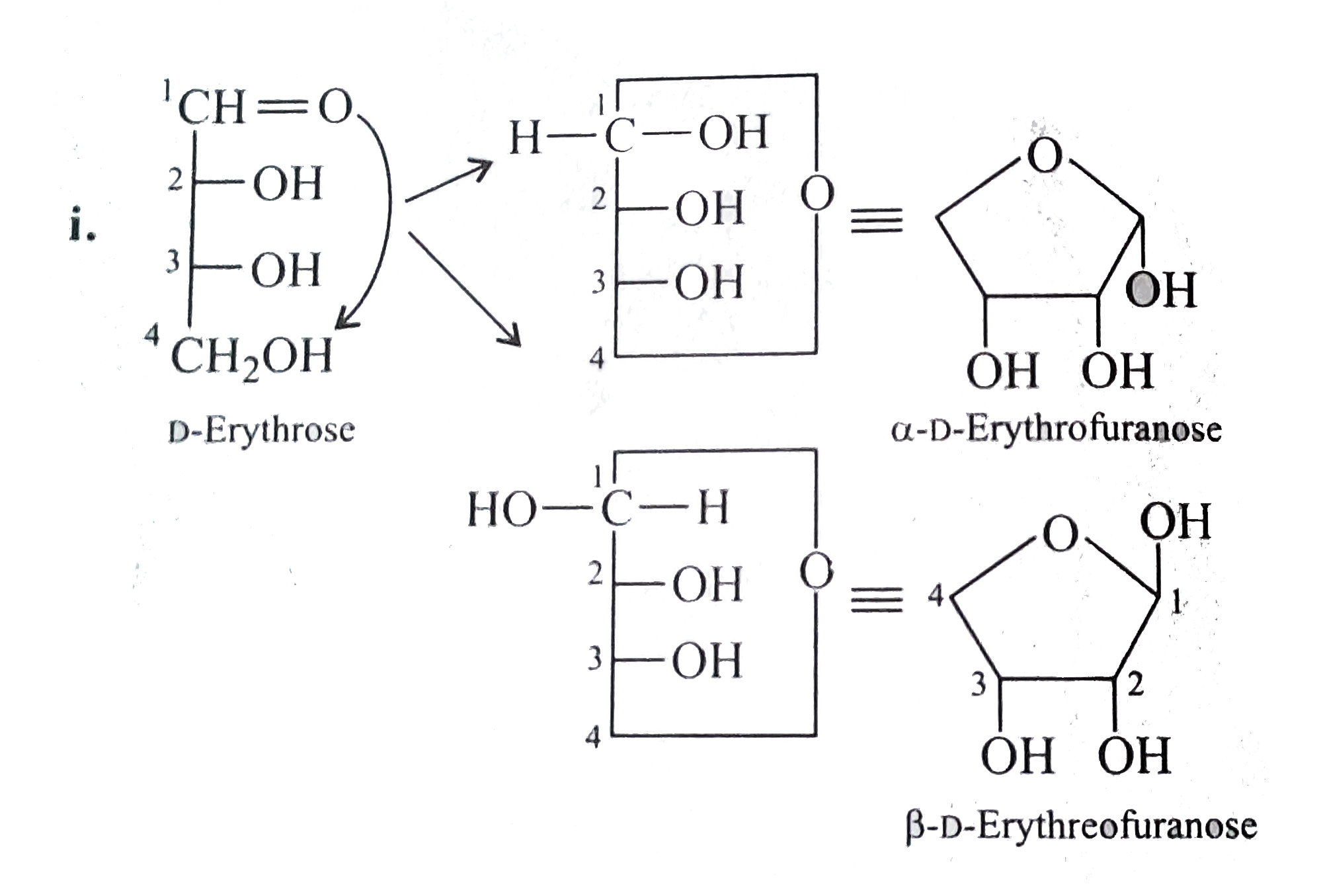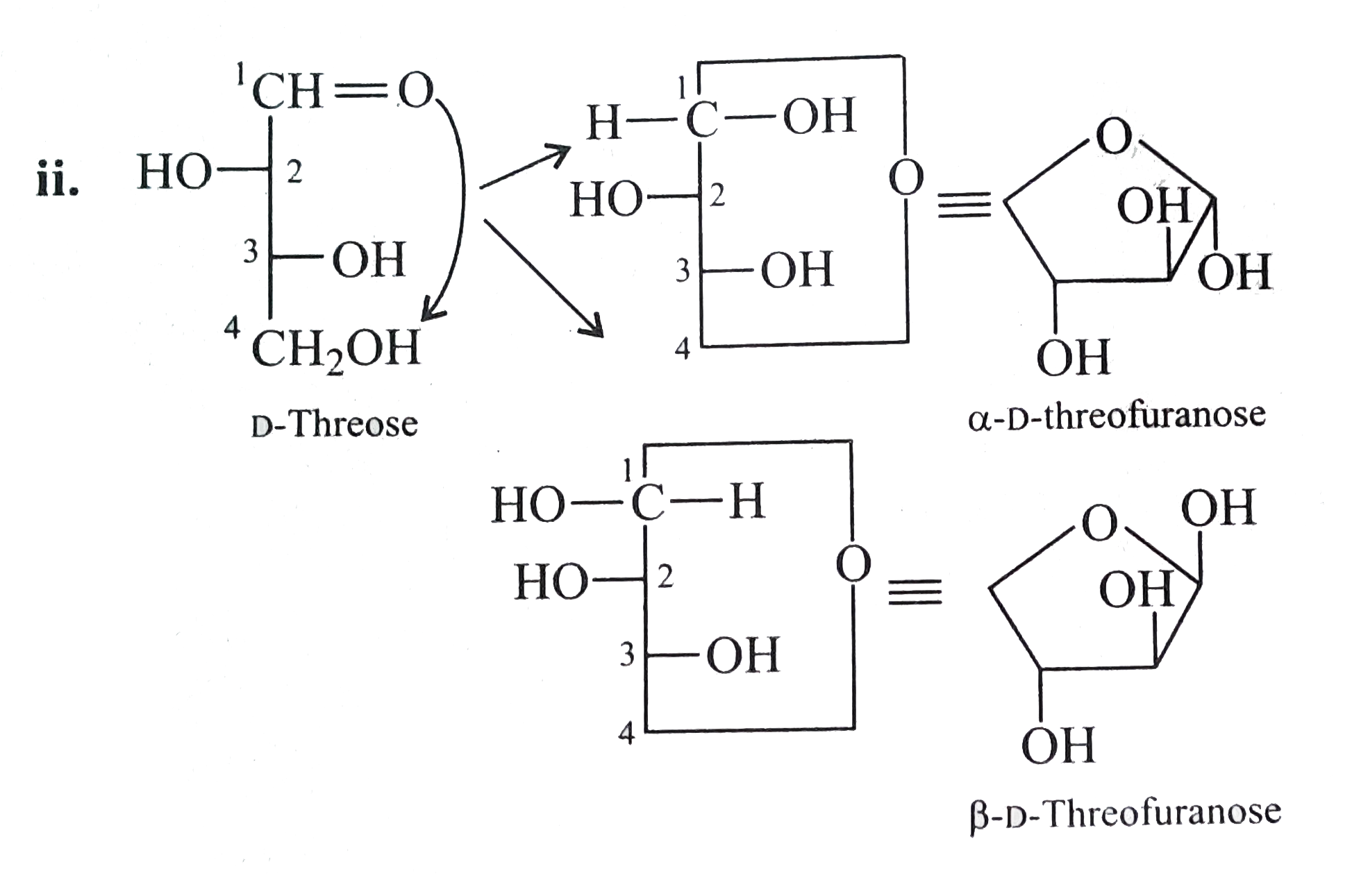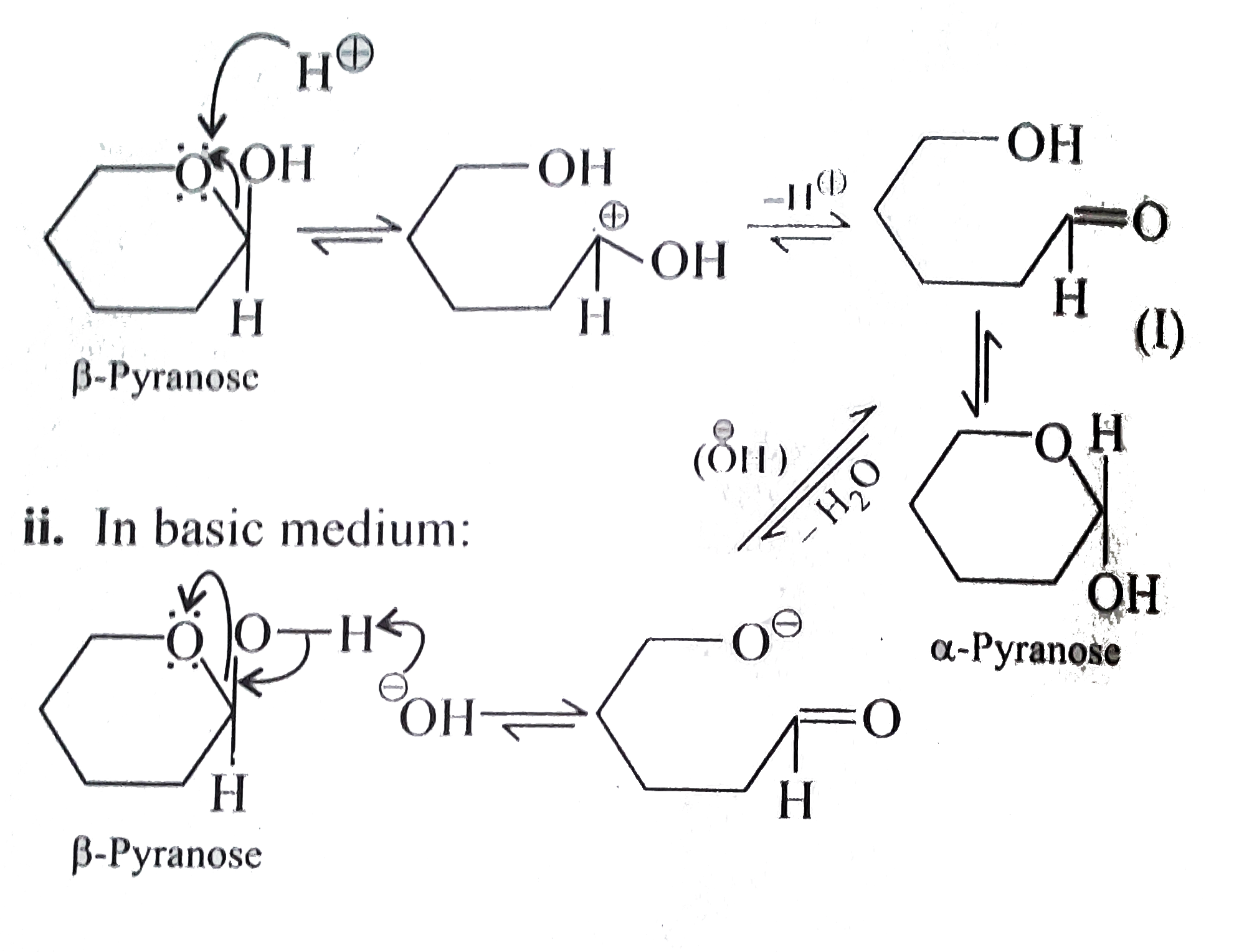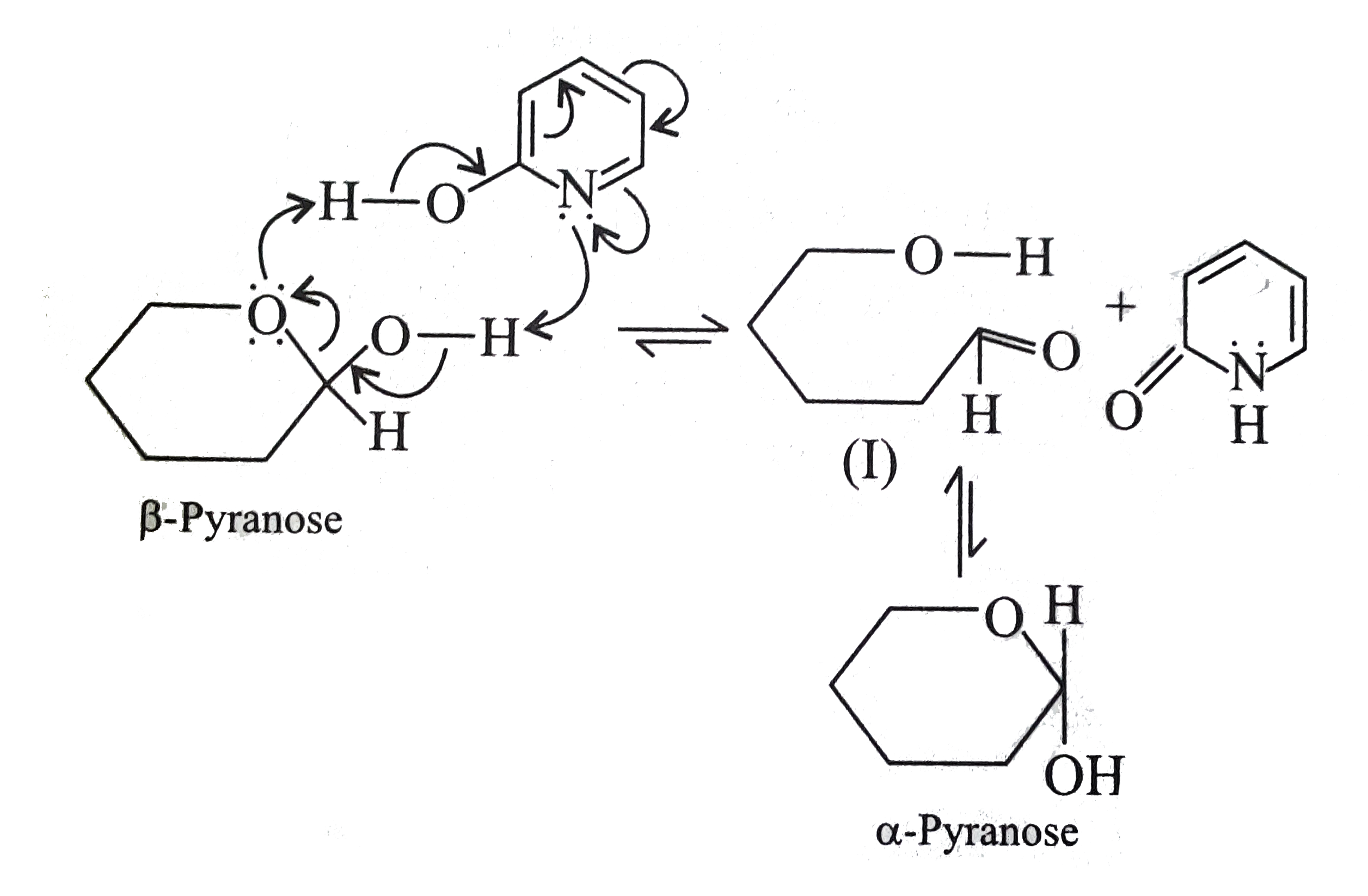(a). Name the smallest aldose which forms cyclic hemiacetal and the functional groups are involved in its formation.
(b). What is invert sugar ?
(c ). Calculate the specific rotation of invert sugar. Given, |α|DofD−glucose=52.7∘
|α|DofD−uc→se=−92.4∘
(d). Give the mechanism of mutarotaion of β−D− gluoco-pyranose in (i) aq.H⊕ and (ii) ΘOH.
(e). Why is the mutaraotation faster in the presence of 2−pyridinol?
Video Solution
Text Solution
a. The smallest aldose is a tetraldose which has four C atoms and an O atom to form a five-membered ring. The CHO group and 1∘OH group of tetrose are involved in the formation of ring. Both erythrose and threose form cyclic hemiacetals.
i. 
ii. 
b. Equimolar mixture of D−glucose and D−fructose obtained but the hydrolysis of sucrose is called invert sugar. since the specific rotation of sucrose is positive and after hydrolysis it changes to negative value and this process is called inversion of cane sugar.
c. The specific rotation is half the sun of specific rotation of glucose and fructose.
:. Specific rotaiion of invert sugar =12[+52.7∘+(−92.4∘)]=−19.9∘
d. i. In acidic medium:

ii. In basic medium:

The rate depends on the conversion of cyclic hemiacetal to open-chain aldehyde (I).
e. 2−Pyridinol is an acid-base catalyst (containing both basic (N) and acidic (OH) groups] which gives H⊕ ion to hemiacetalic O atom and simultaneously removes H⊕ ion from the OH group of the hemiacetal by the formation a cyclic intermediate transition state.

|
Topper's Solved these Questions
- BIOMOLECULESBOOK - CENGAGE CHEMISTRYCHAPTER - BIOMOLECULESEXERCISE - Exercises (Concept Application)
25 Videos
- BIOMOLECULESBOOK - CENGAGE CHEMISTRYCHAPTER - BIOMOLECULESEXERCISE - Exercises (Linked Comprehension)
38 Videos
- BIOMOLECULESBOOK - CENGAGE CHEMISTRYCHAPTER - BIOMOLECULESEXERCISE - Exercises Archives (Analytical And Descriptive)
8 Videos
- AROMATIC COMPOUNDS AND ALKYL AND ARYL HALIDES BOOK - CENGAGE CHEMISTRYCHAPTER - AROMATIC COMPOUNDS AND ALKYL AND ARYL HALIDES EXERCISE - Archives Subjective
18 Videos
- BIOMOLECULES, POLYMERS AND CHEMISTRY IN EVERYDAY LIFEBOOK - CENGAGE CHEMISTRYCHAPTER - BIOMOLECULES, POLYMERS AND CHEMISTRY IN EVERYDAY LIFEEXERCISE - QUESTION BANK
8 Videos
Similar Questions
Knowledge Check
The smallest aldose which is able to form cyclic hemiacetal is/are:
AD-glyceraldehydeBD-ErythroseCD-ThreoseDD-Riboseα−D− Glucopyranose and β−D− glucopyranose are
AdiastereomersBepimersCanomersDall of theseα-D-glucopyranose and β-D-glucopyranose are :
AstereosiomersBdiastereoisomersCenentiomersDanomers
α-D-Glucopyanose and β-D-Glucopyranose are:
View Solutionα-D-Glucopyranose and β-D-Glucopyranose are
View SolutionIf specific rotation of glucose solution is 52∘ and fructose solution −92∘ then what will be specific rotaion of invert sugar ?
View Solutionα-D glucose and β-D -glucose are
View SolutionEquimolar mixture of α-D(+)-glucose has specific ([α]D) is
View Solution
